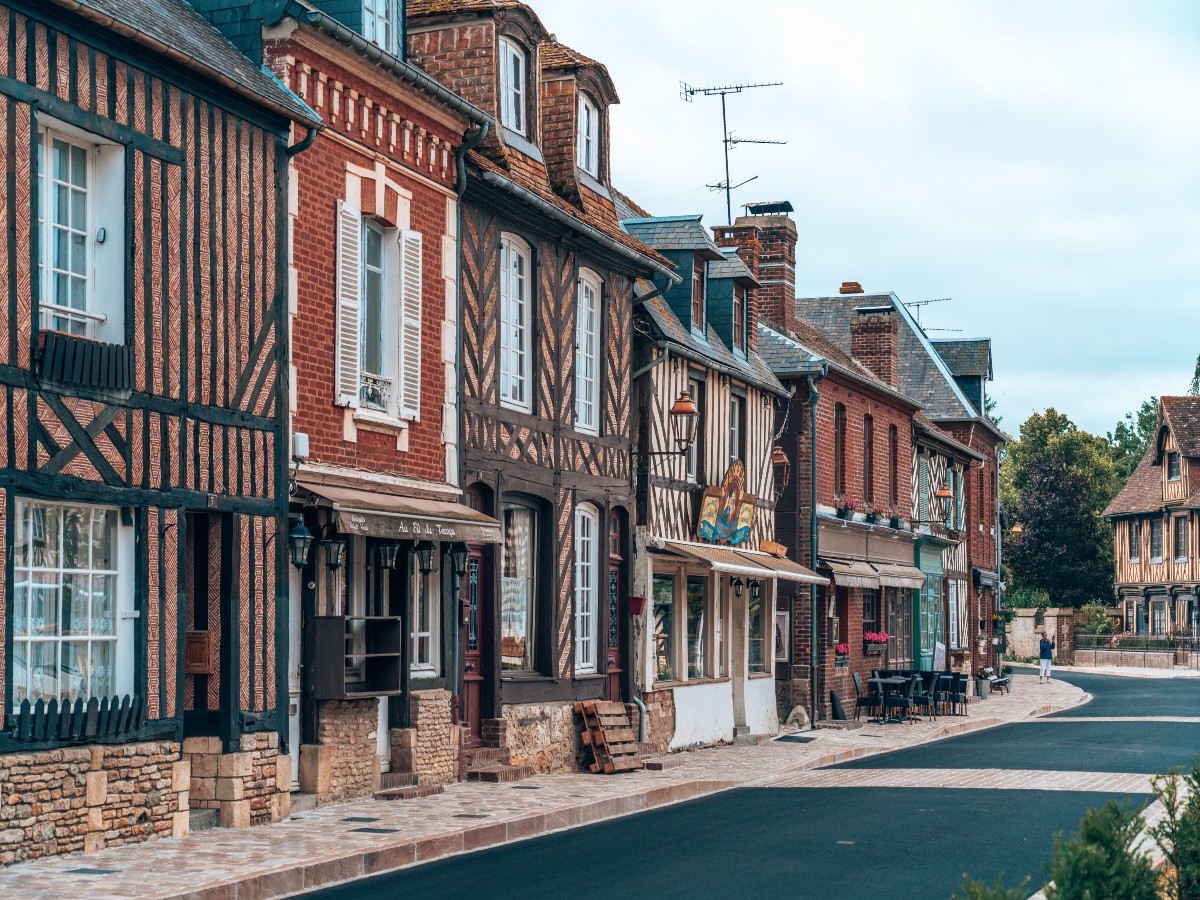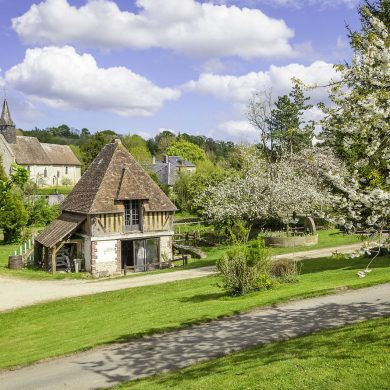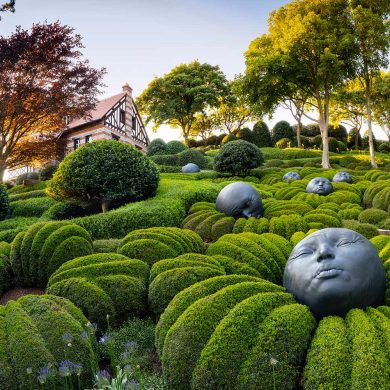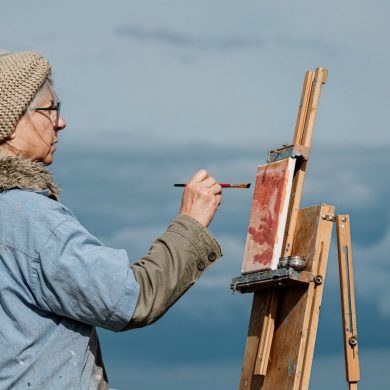Updated on 14 September 2023
Reading time: 4 minutes
David Hockney is undoubtedly one of the most famous and multidisciplinary artists of his generation. He now lives and works in Normandy, where he spent much of 2020 creating The Arrival of Spring and picturing the ever-changing lights of the Normandy countryside. Let’s take a tour of all the places associated with the modern master of colour…
How Hockney fell in love with Normandy
Rightly considered one of the most influential British artists of the 20th century, David Hockney has been delighting and challenging audiences for over 60 years. Having lived and worked in London, Los Angeles, Paris, Malibu and Bridlington (Yorkshire), he has now settled in Normandy, where he has found a space to create his art in peace. It was during a four-day road trip through northern and western France in October 2018 that the artist fell in love with Normandy. He watched the sun set over the docks in Le Havre, so famously captured by Monet in his painting Impression, sunrise, enjoyed a meal in Honfleur, pushed himself around the Bayeux Tapestry in a wheelchair, and immediately decided that this was where he wanted to live. A few weeks later, Hockney ended up buying the first house he looked at, a beautiful 17th-century country home complete with cider press converted into a studio. He has since been capturing the play of light on his garden and landscapes across the region.
Home sweet home
The house Hockney immediately fell in love with lies just outside the picture-perfect village of Beuvron-en-Auge, ten miles south of Cabourg. Beuvron-en-Auge is packed with historic half and full timbered buildings and is in the centre of the main apple growing area of Normandy used to make our world-famous cider, pommeau and of course Calvados. It is officially labelled one of the ‘most beautiful villages in France‘ and is famed for its half-timbered houses, quaint cafés and brocantes. The village is so quintessentially Norman that it would have been hard for Hockney to find somewhere more picturesque to live!

Calvados and the Pays d’Auge
Beuvron-en-Auge is nestled in the heart of the pays d’Auge, which has been known since the Middle Ages for its apples, cheese, horses and cows. Just picture authentic timber-framed houses with Norman cows peacefully grazing grass under apple trees in bloom: this scene is emblematic of this beautiful part of Normandy, where some of our most famous food and drink is made, including the Calvados brandy and Pont-l’Evêque cheese. All of the landscapes drawn or painted by Hockney which feature in his latest exhibition are those of the Pays d’Auge. A great way to discover this lush and colourful area of Normandy is to stroll, cycle or ride the Normandy Cider Route, a well-marked route that introduces visitor to local apple cider and Calvados brandy. Head here either in spring when the blossom is out, or in autumn when the leaves start to turn an array of yellows, oranges and reds. Many of Hockney’s Normandy works actually feature apple and pear trees in bloom!
Hockney and the Bayeux Tapestry
It’s no secret that Hockney is a huge fan of the Bayeux Tapestry. He first saw the Tapestry in 1967 when he toured France to visit Europe’s greatest medieval textile, and was mesmerised by it. In September 2022, the artist even unveiled a massive ‘Bayeux-Tapestry-styled’ picture, which is 90m long (longer than the tapestry itself) and depicts a whole year in Normandy, in Bayeux! The work takes the form of a 90-meter long frieze celebrating the arrival of spring in the Normandy countryside. Painted on an IPad, it was greatly inspired by the thousand-year-old narrative embroidery.
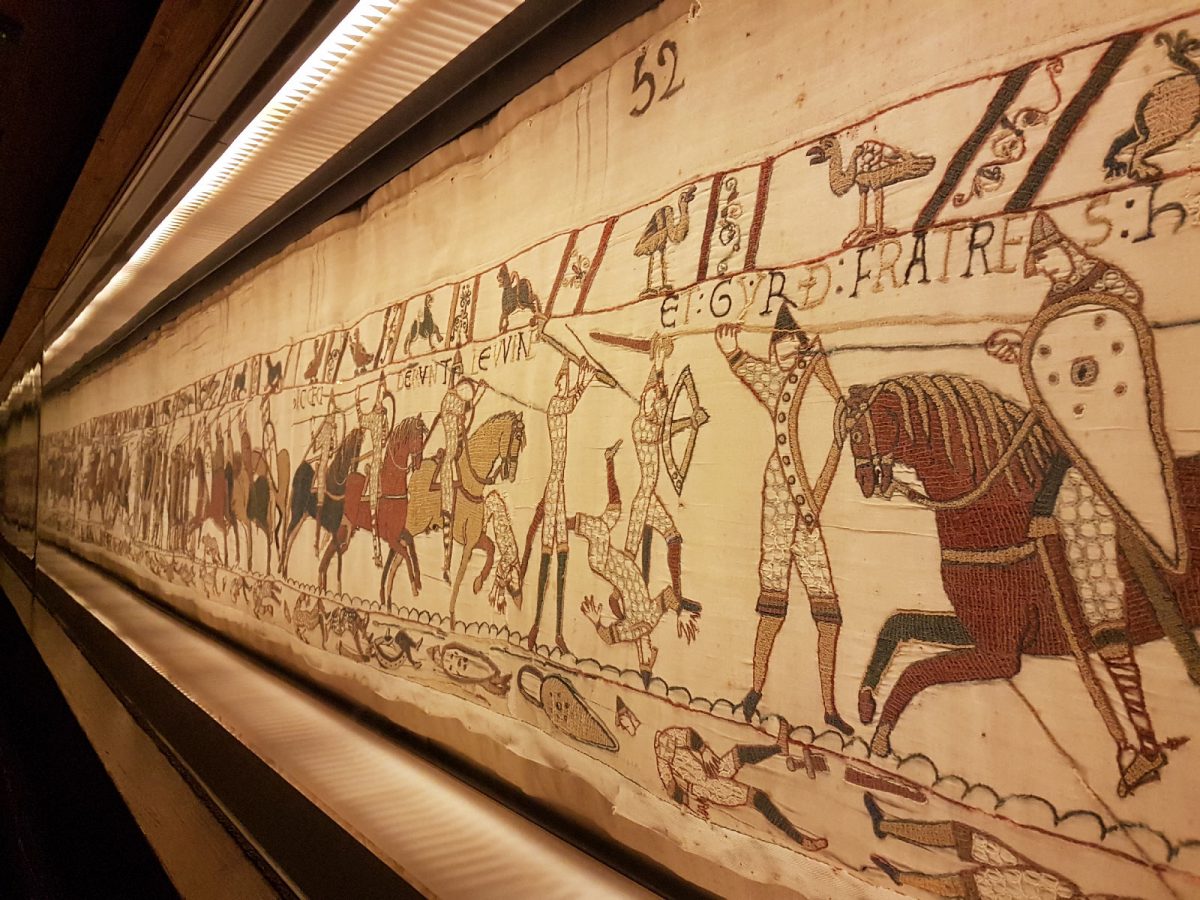
TIMELESS cABOURG
The newly-opened Villa du Temps Retrouvé, in the romantic seaside resort of Cabourg, is one of the only museums in Normandy where you can find one of Hockney’s works. It depicts Beuvron-en-Auge’s central market square, with its beautiful buildings, lively cafés and neighbouring countryside. The Villa du Temps Retrouvé itself, a brand new museum in a historic villa boasting some prestigious collections, is well worth a visit. Thanks to Marcel Proust, visitors can discover the French Belle Époque and find out what everyday life was like during the golden age of Cabourg and the Flowered Coast.
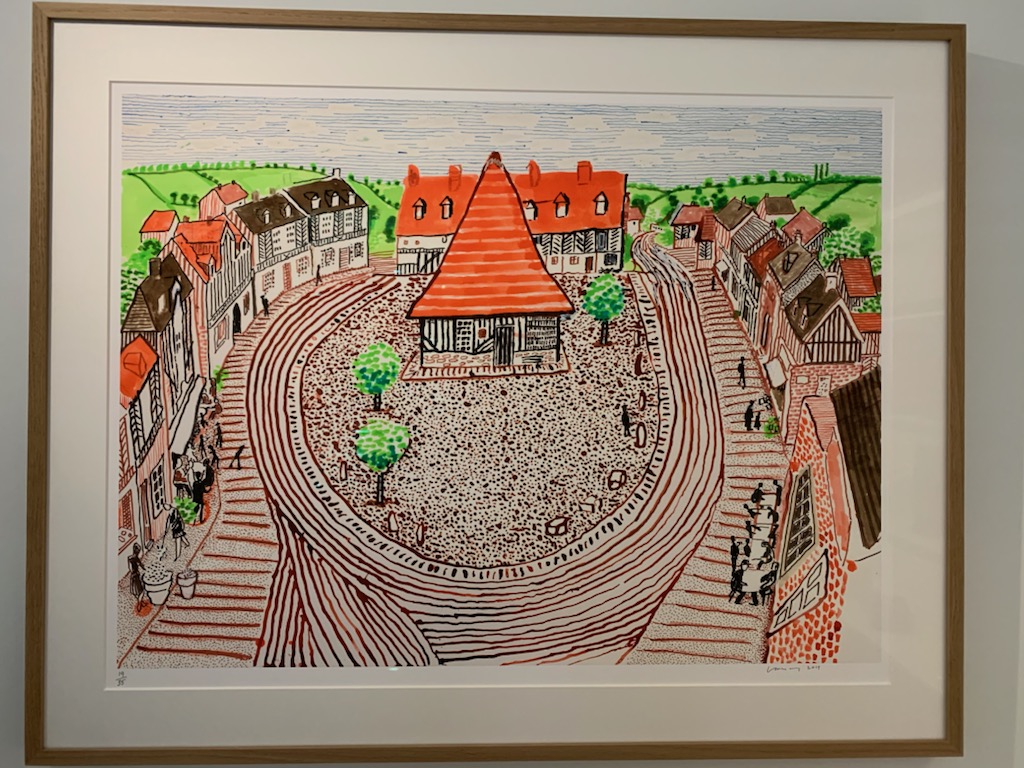
A major exhibition in Rouen
March 2024 will mark the beginning of the 5th edition of the Normandy Impressionist Festival. One of the main events will be a major exhibition of David Hockney’s works at the Musée des Beaux-Arts (Fine Arts Museum) in Rouen. The museum will showcase a selection of Hockney’s previously unshown portraits and landscapes. A must-see!
